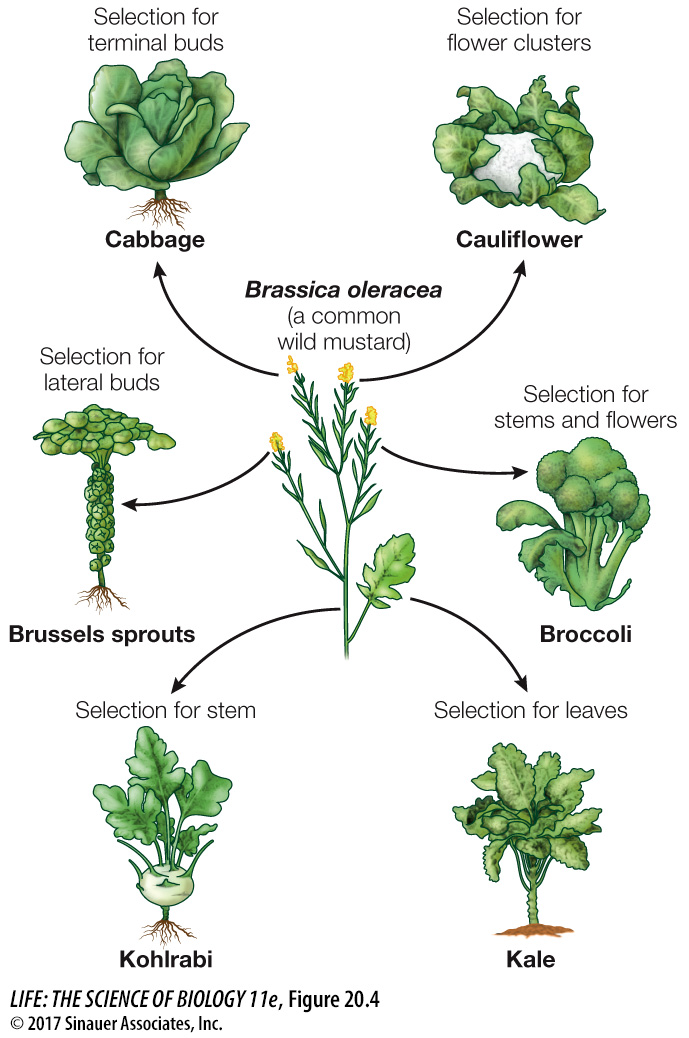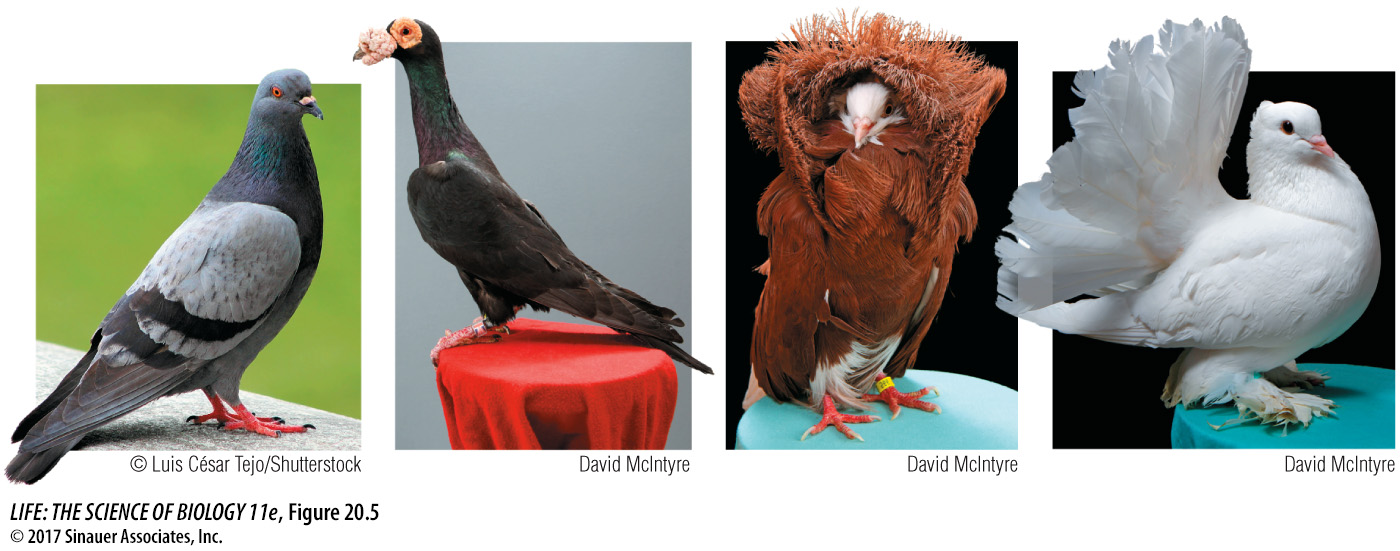Selection acting on genetic variation leads to new phenotypes
As a result of mutation, the gene pools of nearly all populations contain variation for many traits. Selection that favors different traits can lead to distinctly different lineages that descend from the same ancestor. For example, artificial selection for different traits in a single European species of wild mustard produced many important crop plants (Figure 20.4). Agriculturalists were able to achieve these results because the original mustard population had genetic variation for the characters of interest (such as stem thickness or number of leaves).

429
Darwin compared artificial selection, which was commonly practiced by animal and plant breeders, with natural selection that occurred in natural populations. Many of Darwin’s observations on the nature of variation and selection came from domesticated plants and animals. Darwin bred pigeons and thus knew firsthand the astonishing diversity in color, size, form, and behavior that breeders could achieve (Figure 20.5). He recognized close parallels between selection by breeders and selection in nature. Whereas artificial selection resulted in traits that were preferred by the human breeders, natural selection resulted in traits that helped organisms survive and reproduce more effectively. In both cases, selection simply increased the frequency of the favored trait from one generation to the next.

Laboratory experiments also demonstrate the existence of considerable genetic variation in populations, and show how this variation can lead to evolution through selection. In one such experiment, investigators bred populations of the fruit fly Drosophila melanogaster with high or low numbers of bristles on their abdomens from an initial population with intermediate numbers of bristles. After 35 generations, all flies in both the high-

Question
Q: How did flies in the selected populations end up with fewer or more bristles than were observed in any of the flies in the original population?
Over time, sexual reproduction led to new combinations of the existing genes. Many different genes affect bristle number, so the selection for high (and low) bristle numbers led to selection for new genetic combinations that produced high (or low) bristle numbers. In addition, there was selection for any new mutations at any genes that led to high (or low) bristle numbers.